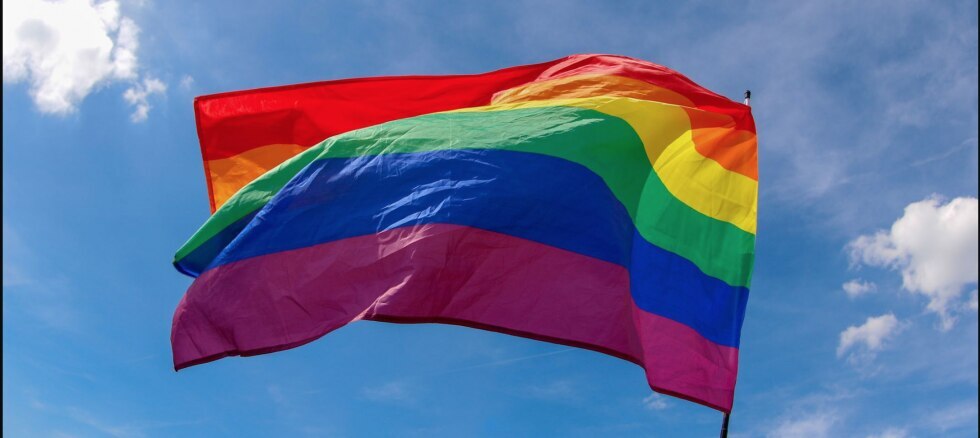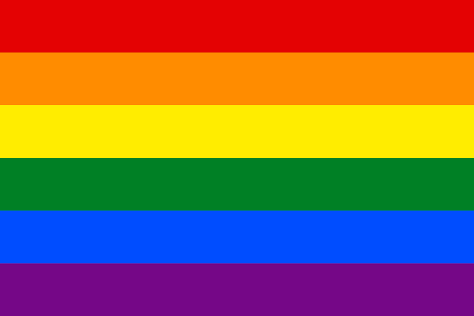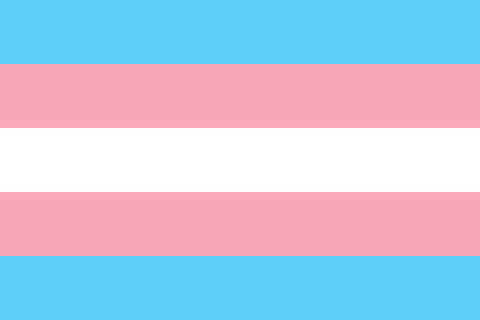Experts Explain the Significance and History Behind Every LGBTQ+ Flag
"These flags represent people on every part of the gender and sexuality spectrum in celebration of who they are and their identities."

There's a good chance you recognize the gay pride flag whether you've seen it via social media, on TV, or in your own community, but the truth is: The LGBTQ+ community has wayyyy more flags than the rainbow one that probably comes to mind.
These 11 individualized flags listed below represent people on every part of the gender and sexuality spectrum in celebration of who they are and their identities.
So whether you’re a member of the LGBTQ+ community or an ally, it’s important you familiarize yourself with each and every one of them. Luckily for you, we’re laying down all the deets— including the history and significance—on every LGBTQ+ flag out there. From the lesbian pride flag, to the trans pride flag, to the asexual pride flag, we promise this will be a learning course you're actually interested in taking.
The Gay Pride Flag

The meaning: According to Robert Deam Tobin, PhD, who teaches courses in gay and lesbian studies and queer theory at Clark University, the gay pride flag “was and is a cheerful, upbeat, optimistic, and instantly identifiable symbol of the LGBTQ+ community—and has caught on throughout the world, in big cities and little ones.” He also notes: “The colours were chosen from the rainbow, a symbol of hope ever since Noah’s flood.”
The history: “Gilbert Baker created the rainbow flag in San Francisco in 1978, as the gay community was flourishing and beginning to fight for its rights,” explains Tobin, noting The Stonewall Riots took place in 1969, and the first gay pride parade took place in 1970.
And fun fact: Tobin says the flag was originally supposed to have eight colours instead of the six we see today, but Gilbert wound up having to axe both turquoise and pink to make the design simple enough for mass production.
The Updated Gay Pride Flag

The meaning: This flag, Tobin says, was created recently as a response “to new developments in the LGBTQ+ community, particularly to be inclusive in terms of race and trans issues.”
The history: The updated flag was developed by Daniel Quasar in 2018. “In 2017, the so-called ‘Philadelphia Flag’ had incorporated a black and a brown stripe on top of the six colors of the Rainbow Flag,” Tobin explains. “Quasar’s version moved the black and the brown to the side as part of a triangle that also included the colors of the trans flag intersecting with the now traditional rainbow flag.”
The Lesbian Pride Flag

The meaning: This is the newest version of the lesbian pride flag, and Tobin explains it is “trying to signal toward diversity with the orange line suggesting gender non-conformity.”
The history: There’s a lot of history when it comes to lesbian pride flags, so buckle up, people: “There are actually a variety of lesbian flags,” says Tobin. “In addition to the one shown here, there is also a purple one created in 1999 — ironically, or problematically, by a man.”
In addition to being designed by a dude, Tobin explains that particular flag was problematic because it featured “a double-edged axe known as a labrys, set in an inverted triangle” that looked a lot like “the black triangle used to identify some lesbians in Nazi concentration camps.” An updated one came in 2010 featuring shades of pink and a lipstick stain as an ode to “Lipstick Lesbians,” but this new one is here to symbolize diversity.
The Trans Pride Flag

The meaning: This is the Transgender Pride Flag and it purposely plays with the traditional colors for baby boys and girls.
The history: “Monica Helms created the Transgender Pride Flag in 1999,” says Tobin. “ In my work on local gay history, I’ve noticed that the 1990s is when many groups start adding the ’T' for transgender to their names. This flag is becoming quite well recognized, in part because the Trans community has had to fight many battles: ensuring medical access, fighting discrimination in the military and elsewhere, providing resources for trans youth, taking on hostile state laws, and fighting discriminatory ballot measures.”
The Intersex Pride Flag

The meaning: While the transgender pride flag plays with traditional colors, Tobin notes that “the Intersex Pride Flag works with colors that have not been traditionally gendered, like yellow.” As for the circle, Tobin says that “represents wholeness.”
The history: “The Intersex Pride Flag was created in Australia in 2013,” says Tobin. “The flag has undoubtedly helped unify the Intersex Community, which has had to bond together to fight medical and political battles, notably making sure that physicians didn’t undertake corrective surgery on people born intersex before those people were able to give consent.”
The Bisexual Pride Flag

The meaning: According to Tobin, the idea behind the bisexual pride flag is “the pink represents same-sex attraction, the blue represents heterosexual attraction, and the two colors fade imperceptibly into each other to create blue.”
The history: “Michael Page designed the bisexual pride flag in 1998,” says Tobin. “It’s interesting that, in general, at the end of the 1990s, you see the addition of the lesbian, trans, and bisexual flags, after the rainbow flag had been around for two decades. It’s as though the 1990s was a moment of understanding the need for communities to break out and create their own identities.”
The Pansexual Pride Flag

The meaning: See the pink and blue parts of the flag? Okay, well, Tobin says those parts represent traditional genders, “while the yellow represents non-binary people.” He also notes it’s that yellow part that distinguishes this flag from the bisexual one.
The history: “The pansexual pride flag has been around since the 2010s,” says Tobin. While there isn’t much intel out there on who created it, most sources agree it was created on the internet.
The Asexual Pride Flag

The meaning: This flag may be the asexual pride flag but it’s not strictly for asexuals. “Its colors are designed to include ‘graysexuals,’ who operate in the ‘gray space’ between sexuality and asexuality, as well as “demisexuals,” who only feel sexual attraction under certain circumstances,” explains Tobin.
The history: According to The Asexual Agenda, the flag came to be in July of 2010 when Asexual Visibility and Education Network (AVEN) came together to push the community into deciding upon a flag. After three stages of polls, the asexual flag we have today was announced.
The Non-Binary Pride Flag

The meaning: According to Tobin, this particular flag is meant to “represent people outside the traditional gender binary, people with multiple genders, people with mixed genders, and people with no genders.”
The history: Tobin says the non-binary flag we see today was first created by Kye Rowan in 2014.
Genderfluid Pride Flag

The Meaning: “This flag goes from pink, representing feminity, to blue, representing masculinity, and tries to cover everything in between,” notes Tobin.
The History: According to Out Right International, this flag was created by JJ Poole in 2012.
The Genderqueer Pride Flag

The meaning: The colors of this flag, says Tobin, all represent “androgyny, agender, and nonbinary identities.”
The history: The genderqueer pride flag was created by Marilyn Roxie in 2011, says Tobin.
The Agender Pride Flag

The meaning: According to Tobin, “this flag chooses colors that have not been traditionally gendered.” Specifically, Out Right International notes “the black and white stripes represent an absence of gender, the gray represents semi-genderlessness, and the central green stripe represents nonbinary genders.”
The history: According to Out Right International, the agender pride flag was created by Salem X in 2014.
more from Life

Why 'Heated Rivalry' has everyone hot, bothered, and obsessed

Regal revivals, fashion shake-ups, and everything new we’re obsessing over this month

When is the new season of 'Euphoria' out? Plus 5 things we know about it

How Aldo became one of the hottest footwear and accessories brands in India

Four photographers on why a good photograph is more than just a good camera

Why writers are side-eyeing ChatGPT (even as they keep using it)

Which 2025 pop culture moment are you?

Have you found true love this cuffing season or are you just “winter coating” for the holidays?

The Cosmo-approved holiday beauty list to help you glow through party season

Why your best friend might be the most stable relationship you’ll ever have
